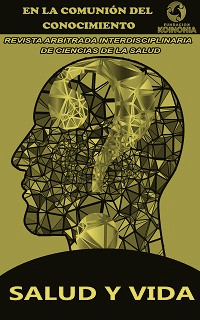Sick building syndrome and CO2 in emergency, inpatient and operating room areas
DOI:
https://doi.org/10.35381/s.v.v7i2.3495Keywords:
air microbiology, health care levels, health care (Public Health)., (Source: DeCS)Abstract
Objective: to relate sick building syndrome and CO2 levels in the emergency, hospitalization and operating room areas of the Hospital Básico de Machachi. Methods: Descriptive observational study. Results: The correlation shows a p-value of 0.348, thus proving the null hypothesis. There is no relationship between CO2 concentration and the perceptions of the sick building of the personnel surveyed. Conclusions: In the current study there is no relationship between CO2 concentration and perceptions of sick building syndrome in the surveyed personnel. Future studies should be planned to determine exactly which factors are related to sick building syndrome.
Downloads
References
Brownson K. Breathing hospital air can make you sick. Health Care Manag (Frederick). 1999;18(2):65-72. doi:10.1097/00126450-199912000-00011
Brownson K. Hospital air is sick. Hosp Mater Manage Q. 2000;22(2):1-8.
Hellgren UM, Reijula K. Indoor air problems in hospitals: a challenge for occupational health. AAOHN J. 2011;59(3):111-117. doi:10.3928/08910162-20110223-01
Rosário Filho NA, Urrutia-Pereira M, D'Amato G, et al. Air pollution and indoor settings. World Allergy Organ J. 2021;14(1):100499. doi:10.1016/j.waojou.2020.100499
Chatkin J, Correa L, Santos U. External Environmental Pollution as a Risk Factor for Asthma. Clin Rev Allergy Immunol. 2022;62(1):72-89. doi:10.1007/s12016-020-08830-5
Rostron, J. Sick building syndrome: A review of causes, consequences and remedies. J Retail Leisure Property. 2008;7,291–303 https://doi.org/10.1057/rlp.2008.20
Persily A. Development and application of an indoor carbon dioxide metric. Indoor Air. 2022;32(7):e13059. doi:10.1111/ina.13059
Baudet A, Baurès E, Blanchard O, Le Cann P, Gangneux JP, Florentin A. Indoor Carbon Dioxide, Fine Particulate Matter and Total Volatile Organic Compounds in Private Healthcare and Elderly Care Facilities. Toxics. 2022;10(3):136. doi:10.3390/toxics10030136
Kalender-Smajlović S, Dovjak M, Kukec A. Sick building syndrome among healthcare workers and healthcare associates at observed general hospital in Slovenia. Cent Eur J Public Health. 2021;29(1):28-37. doi:10.21101/cejph.a6108
Dutheil F, Vilmant A, Boudet G, et al. Assessment of sick building syndrome using visual analog scales. Indoor Air. 2022;32(3):e13024. doi:10.1111/ina.13024
Malkova AM, Shoenfeld Y. Autoimmune autonomic nervous system imbalance and conditions: Chronic fatigue syndrome, fibromyalgia, silicone breast implants, COVID and post-COVID syndrome, sick building syndrome, post-orthostatic tachycardia syndrome, autoimmune diseases and autoimmune/inflammatory syndrome induced by adjuvants. Autoimmun Rev. 2023;22(1):103230. doi:10.1016/j.autrev.2022.103230
Cornejo I, Arias Ulloa C, Duque Córdova L, Escobar-Segovia K. Identificación de síntomas de enfermedades compatibles con el síndrome del edificio enfermo en una empresa industrial en Esmeraldas, con el cuestionario NTP 380 del INSHT [Identification of symptoms of diseases compatible with sick building syndrome in an industrial company in Esmeraldas, using the INSHT NTP 380 questionnaire]. RCTU [Internet]. 2019;6(1):79-6.
Nordström K, Norbäck D, Akselsson R. Influence of indoor air quality and personal factors on the sick building syndrome (SBS) in Swedish geriatric hospitals. Occup Environ Med. 1995;52(3):170-176. doi:10.1136/oem.52.3.170
Tangwiwat C, Tultrairatana S, Panomyoung K. Prevalence and factors associated with sick building syndrome among healthcare workers. Dis Control J [Internet]. 2023 Jun. 29;49(2):430-4.
Surawattanasakul V, Sirikul W, Sapbamrer R, et al. Respiratory Symptoms and Skin Sick Building Syndrome among Office Workers at University Hospital, Chiang Mai, Thailand: Associations with Indoor Air Quality, AIRMED Project. Int J Environ Res Public Health. 2022;19(17):10850. doi:10.3390/ijerph191710850
Published
How to Cite
Issue
Section
License
Copyright (c) 2023 Carolina Estefanía Quinga-Quillupangui, Edmundo Daniel Navarrete-Arboleda, Vladimir Vega-Falcón, Gustavo Alberto Chiriboga-Larrea

This work is licensed under a Creative Commons Attribution-NonCommercial-ShareAlike 4.0 International License.
CC BY-NC-SA : Esta licencia permite a los reutilizadores distribuir, remezclar, adaptar y construir sobre el material en cualquier medio o formato solo con fines no comerciales, y solo siempre y cuando se dé la atribución al creador. Si remezcla, adapta o construye sobre el material, debe licenciar el material modificado bajo términos idénticos.
OAI-PMH: https://fundacionkoinonia.com.ve/ojs/index.php/saludyvida/oai.









